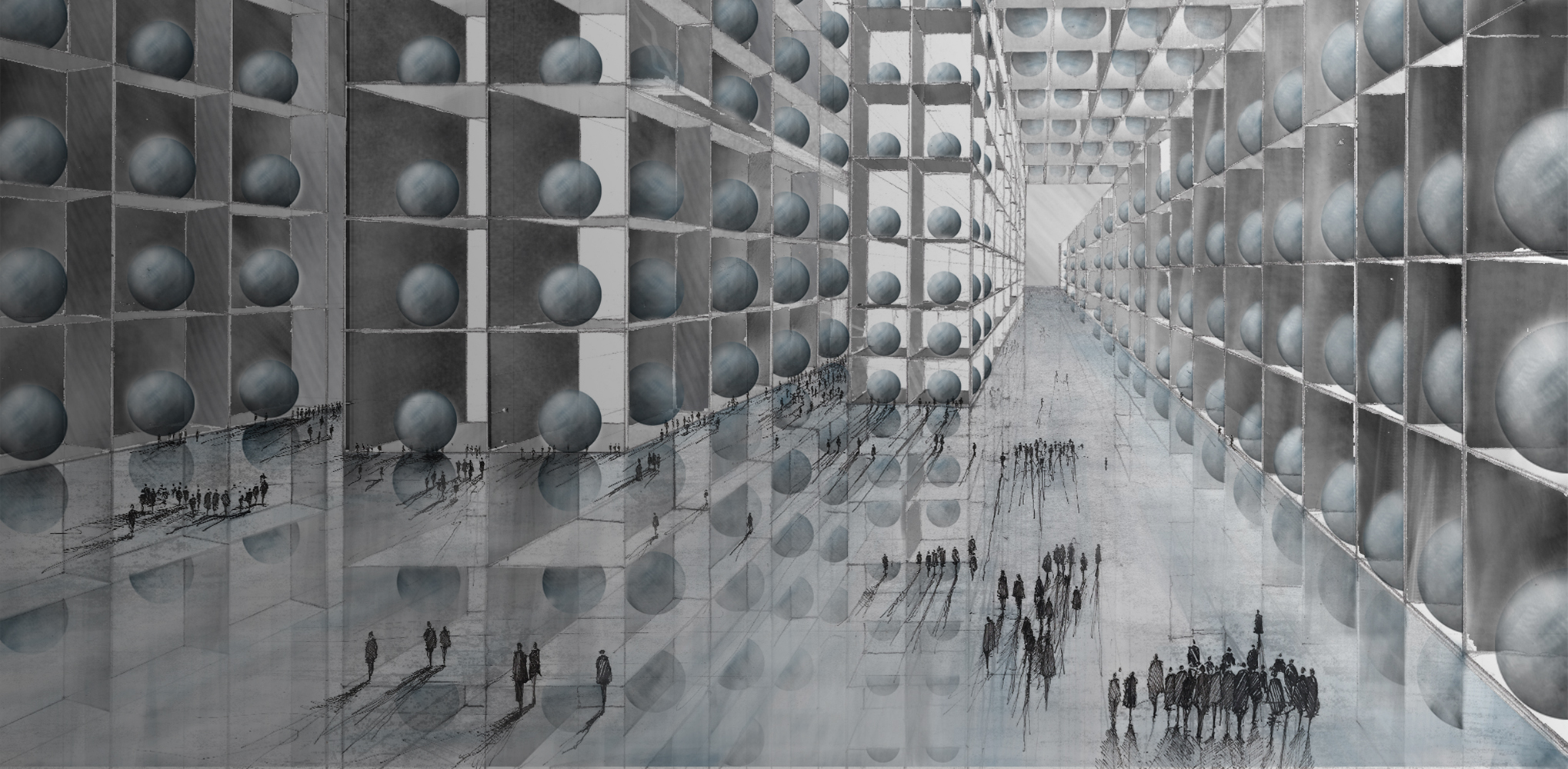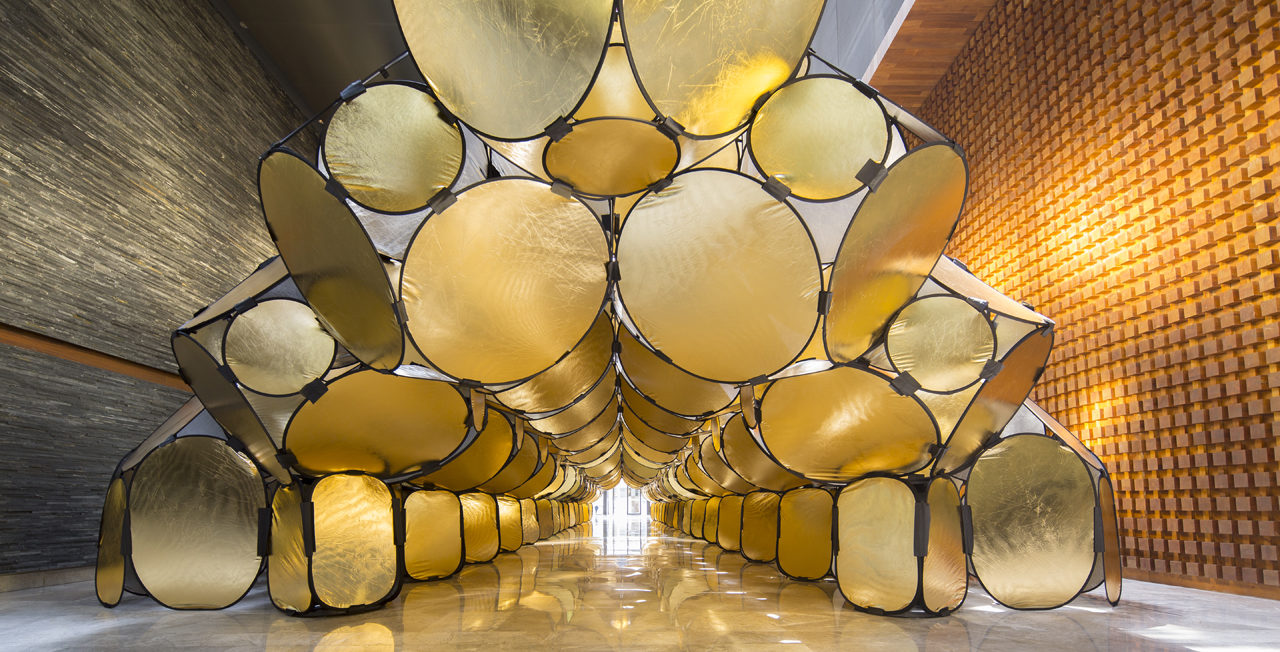The winners of the 2019 One Drawing Challenge have been announced, with the Student Winner being none other than Ozair Mansoor, a student at Indus Valley School of Art and Architecture in Karachi, Pakistan. Mansoor’s conceptual piece “Between Possibilities and Limitations” captivated jurors with its highly atmospheric and spatial qualities. Ozair won $2,500 and numerous other prizes for his submission.
The drawing imagines a great exhibition hall that serves as a representation of human existence in a rapidly globalizing world. Rather than depicting a proposal for a new architecture, Mansoor depicts this current condition through a physical manifestation. The ingenuity of the drawing comes from the illusion of endless possibilities, amplified by its scale and perspective. Upon closer inspection, the repetition of elements reflects the world’s “sameness”.
We caught up with Ozair Mansoor to gain a better understanding of his philosophy, workflow and feelings on the success of “Between Possibilities and Limitations”.
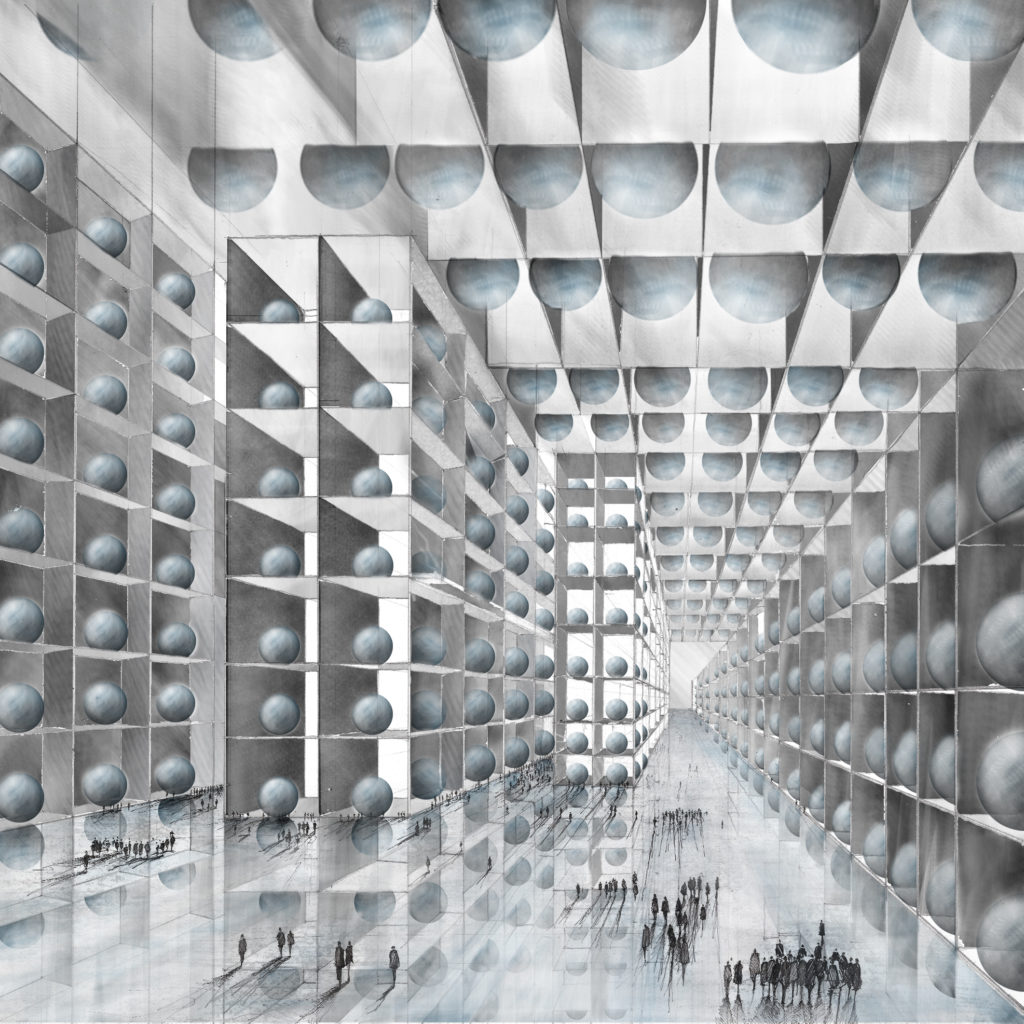
Nathaniel Bahadursingh: Your drawing speaks to an illusion of endless possibilities in our rapidly globalizing world, and you depict this through the repetition of elements to reflect the world as instead limited. Referring to these elements, what seems like shelved spheres stretching into infinity, do they symbolize anything specific, if at all?
Ozair Mansoor: The shelved spheres represent possibilities. Now, I left this open-ended for the viewer — they could be possibilities of life or possibilities of what one aspires to achieve, to be, to strive for, essentially possibilities of a fate of survival. But, the fact that they are shelved and not more than one can be accommodated in one box depicts that they are limited as well.
The fact that they are repeated and the drawing gives the illusion of them being endless also goes to show that this fate which we all want to acquire has a “sameness” that, in one way or another, makes us human. This sameness is to survive, the survival of the fittest in this rapidly globalizing world. Evolving from hunters and gatherers, we are still the same, that quality is still intrinsic to us: We are still hunting for survival.
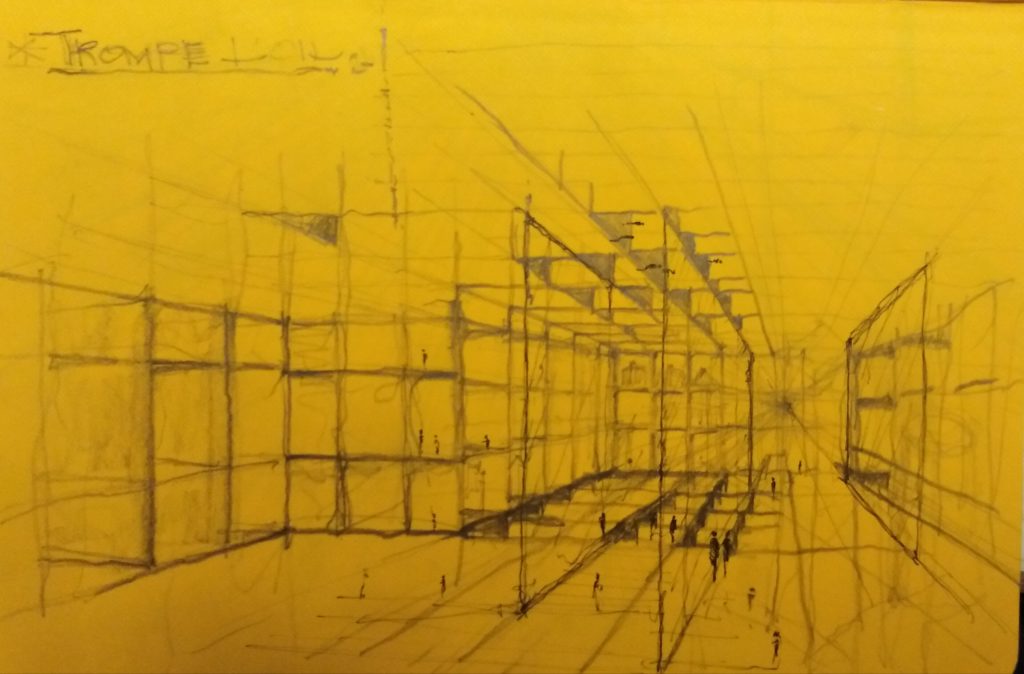
What were the primary challenges of conceiving your work, from forming the idea to the actual physical process of drawing?
The primary challenge for me was to define what an architectural story means, and it took me good two weeks to define this, after having numerous conversations with professors, colleagues and even non-architects, such as my family. It was a challenge for me to gain inspiration and perceive a narrative; therefore I just took inspiration from what impacts me the most in architecture and the built environment itself.
During the inception of my idea, I was interning in an architectural firm in Chicago. The urban scape of Chicago and Karachi are poles apart. Chicago is home to a dense skyline, based on a grid and heavily pedestrianized. This made me walk through spaces where the high rises towered over me, almost daunting, yet very connected.
The beauty of the city was the fact that it was so pedestrianized, but, as I was an alien to the urban mobility systems, I soon realized the hollowness in that hustle and bustle of the street. As it was simply a mode of getting from one box to another, from one building to another, from the train station to the subway, in pursuit of survival, the fast paced streets were a physical manifestation of the proverb “time is money”.
In Karachi, due to the lack of this infrastructure, poorly maintained streets and a lack of pedestrian movement, my city gives me a very different feel of the boxes around me. I interact with them from a distance, mostly visually. This is an unfortunate reality of our cities; the built environment reflects the nature of the society.
For your piece, why did you choose that specific illustration technique and format?
For me, architecture is purely a study of spaces, and that is what I aim to explore. The richer a space, the richer the envelope. Also, in order to depict the above mentioned narrative of my interaction with the built environment, a one-point perspective impacted me the most, as all our possibilities and sameness lead to singularity, where everything overlaps. As such, a sketch formed the best way to explore a space where the view continually narrows.
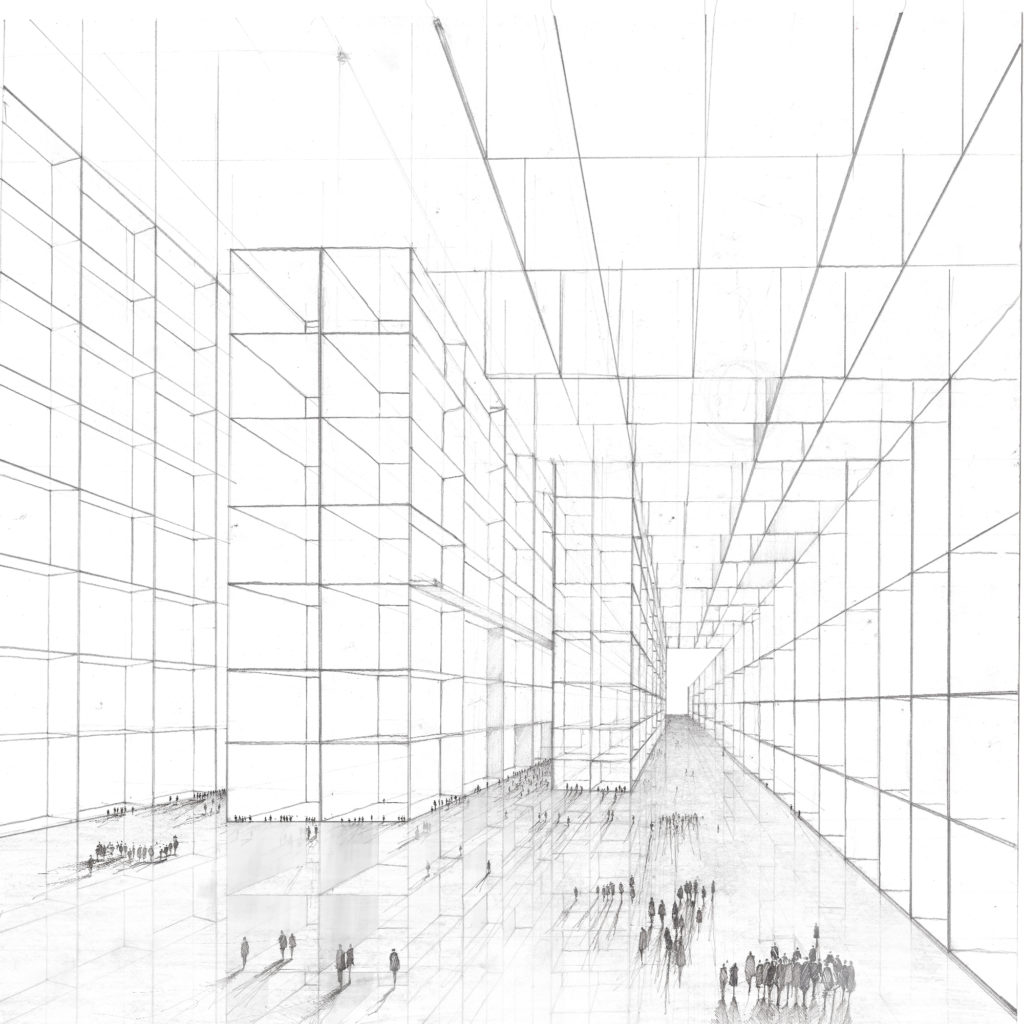
Do you have any other work as conceptual as this?
Ozair Mansoor: I feel in this age of technology it is imperative to grow and adapt more contemporary means of work, but it also comes with the responsibility and skill of retaining the traditions. In this particular drawing I used both traditional drafting methods and contemporary computer aided skills, such as photoshop.
I drafted this drawing on a 20 inch square sheets which gave me a sense of the monumental scale and control over the positioning of my human figures. Moreover the raw connection of pen to paper allowed me to exercise the law of thirds, this led to my vanishing point being at the intersection of the two-thirds of the square sheet giving the square a dynamic flow and fluid eye movement.
What one tip would you give students and architects looking to win next year’s One Drawing Challenge?
My advice to aspiring ODC participants would be to just sketch as often as they can, and sketch everything. All this feeds into conceptualizing strategies for such complex narratives. Drawing is the MOST powerful mode of communication, there is no right and no wrong, no one can question you as long as you’re communicating your idea across. You can defy laws of the world in a drawing as you’re the God of your little sketchbook, parchment or canvas.
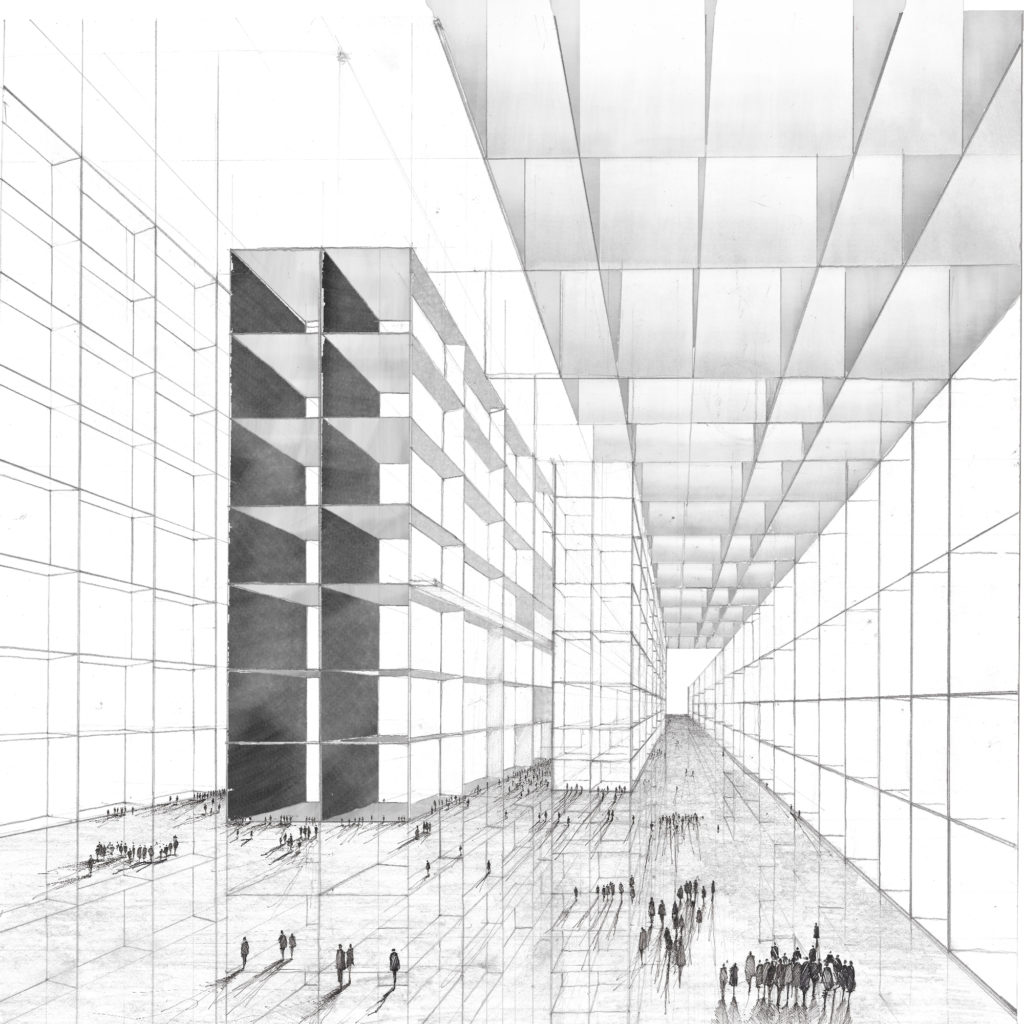
What does winning the 2019 One Drawing Challenge mean to you?
Winning this competition means that anything is possible. I nonchalantly submitted my entry Between Possibilities and Limitations, but little did I know that it will be recognized and rewarded by the jurors. This gives me, my institution, Indus Valley School of Art and Architecture, and my country, Pakistan, great pride! Pakistan Zindabad!
Check out every amazing winner and commended entry in the inaugural One Drawing Challenge here. Interested in participating this year? Check out the 2020 edition of the competition now:
Enter the 2020 One Drawing Challenge
